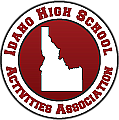Fall sports have a few hurdles to clear
Local control seems to be the way each and every decision is being made, and it looks like high school sports are falling right in line.
Last week, the Idaho High School Activities Association (IHSAA) released a 52-page document that outlined their guidelines for fall sports in the midst of COVID-19.
The reason for the local control aspect is quite simple — what might be good in a place like Boise, Coeur d’Alene, or even Kellogg, might not work in Wallace or Mullan or vice versa.
With fall sports scheduled to resume on Aug. 10, it really has local athletic directors watching the decisions of their local leaders and school district administrators closely.
With the exception of volleyball and swimming, fall sports are completely outdoor in Shoshone County, with football, soccer and cross country happening all at the same time.
But there are concerns over athletes being in close proximity to one another particularly in football where each play begins with anywhere from six to 18 players lining up just a couple feet from each other.
Recommendations such as wearing face masks as much as possible, but not wanting face shields used in competition, no post-game handshakes, and as much outside practice as possible are just a few of the things in the guidelines.
However, the IHSAA mandates that all schools must have approval from their local school boards and public health officials before sports begin and must check four requirements prior to beginning.
• Each host school must have a plan for fan and team attendance. These plans must follow the governor’s reopening protocols and that plan must be school board and health department approved.
• Each school will need to develop a transportation plan.
• Each school will need a plan in the event that a coach or athlete tests positive, and that plan be school board and health department approved.
• Schools will also need an approved “return-to-participation” plan with the school board and health department.
Wallace High School AD Bruce Bailey is patiently watching, but he doesn’t know if he should be optimistic or concerned for his fall athletes.
“At this point I don’t think anyone knows which way they, or the other schools are going to go,” Bailey said. “It’s going to depend on what’s going on all around us, things like football may be more difficult to pull off than volleyball. But right now it feels like there’s not a whole lot of direction coming from anywhere.”
One of the major hurdles surrounding local control is the control aspect in and of itself.
For example, a smaller school like Wallace might be ready to go for a full season, but then schools like St. Maries or Lakeside might not be and that would leave holes in the schedules for various sports.
Up in Mullan, where not only does AD Stetson Spooner have to watch and worry about his teams, but he also has to pay attention to what Montana is doing as his Tiger football team co-ops with St. Regis.
That isn’t to say he wasn’t prepared for the IHSAA to turn over control to the local districts, but isn’t disillusioned by the fact that it still boils down to the decisions from local health officials, such as Panhandle Health District to give their blessing.
“Honestly, the guidelines are what I expected,” Spooner said. “Allowing plans to be made by the district’s staff, administration and the board allows that ‘freedom’ that people seem to need rather than being told what, when and how to do things that may not be directly correlated with another area that may have completely different variables we face here in the Silver Valley and throughout Idaho.”
However, Spooner is thankful for these guidelines, because for a school of Mullan’s size (Idaho’s smallest classification) the rules seem to make fall sports very possible.
“The guidelines are clear and have points of emphasis that completely make sense,” Spooner said. “The main reason the guidelines look great to us is that at this point it seems optimistic and promotes the idea that fall sports are good to go.”
Neither Bailey, not Spooner are envious of the position that the IHSAA or their local school boards are in, but they are concerned for their students and appreciative of the efforts being put forth by everyone involved.
“I thought air quality was tough when it came to managing practices and schedules,” Bailey joked. “We’re going to do everything we can do to get kids the ability to participate in something.”
Spooner complimented the IHSAA for their guidance.
“Overall, I think Ty Jones (IHSAA director) and the IHSAA put it in a lot of effort with this document and it has the intent of benefiting Idaho’s student athletes,” Spooner said.

